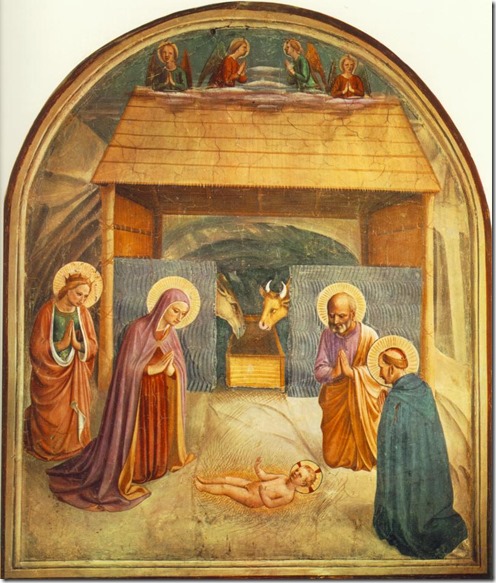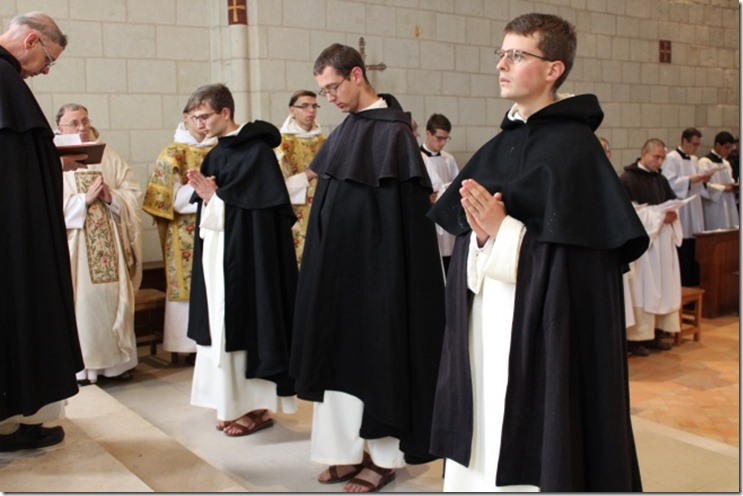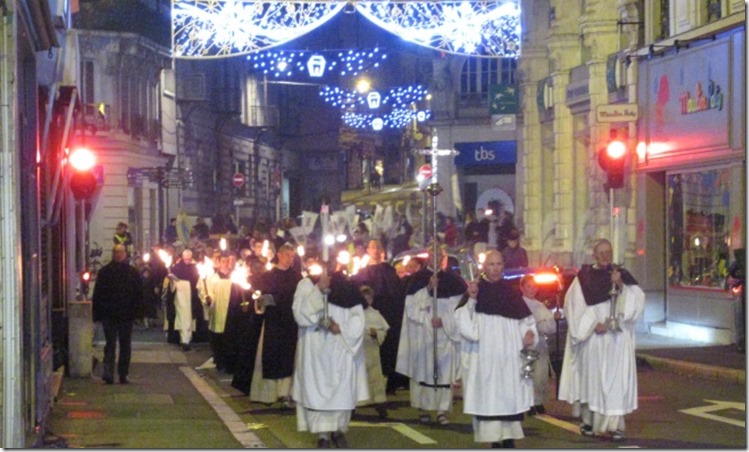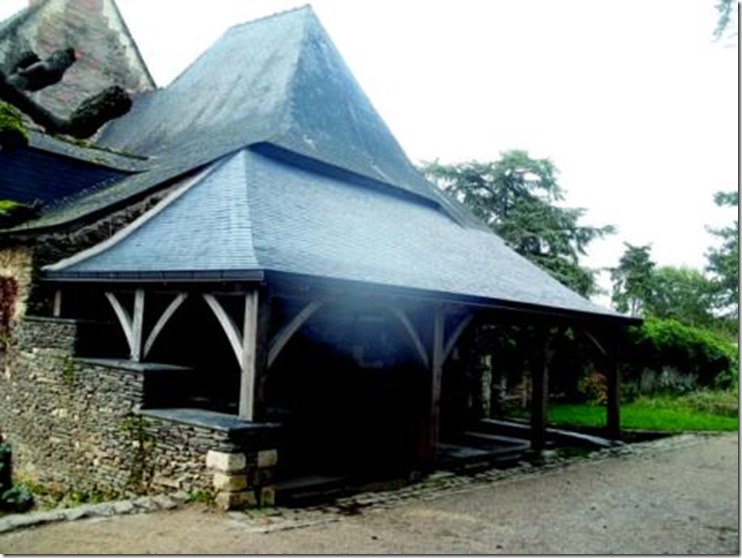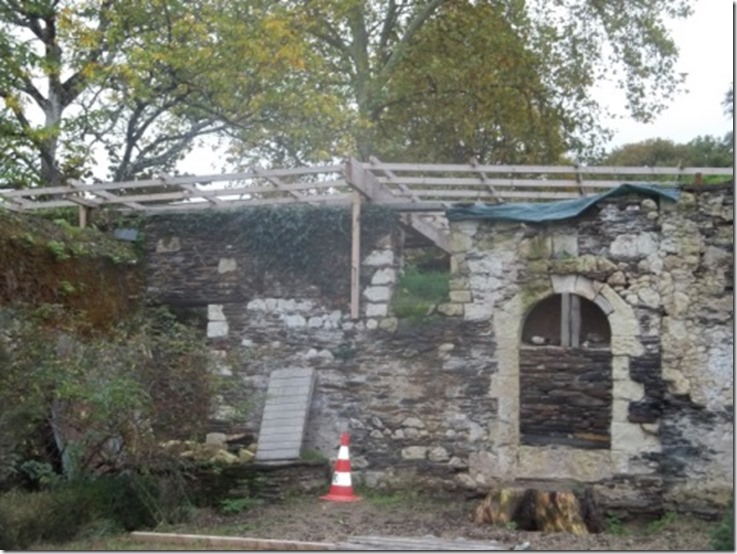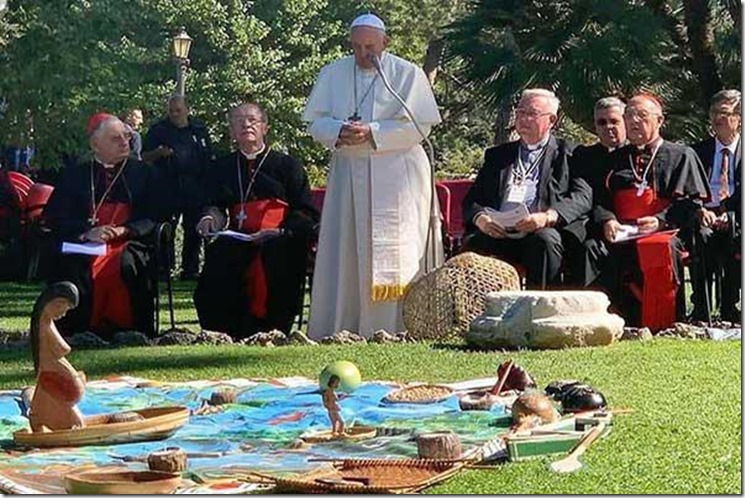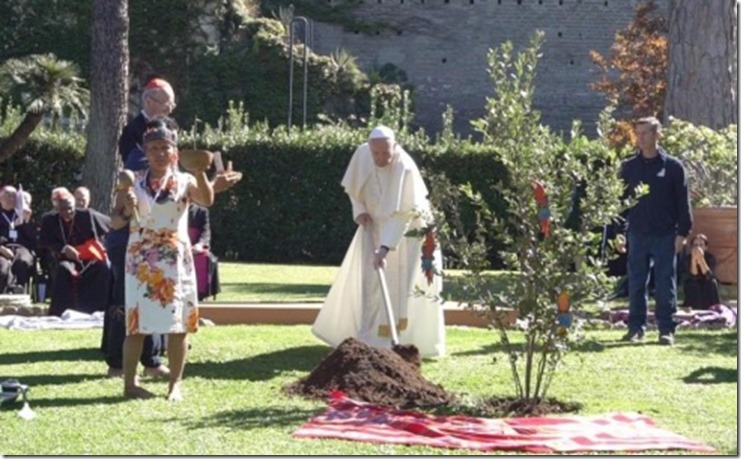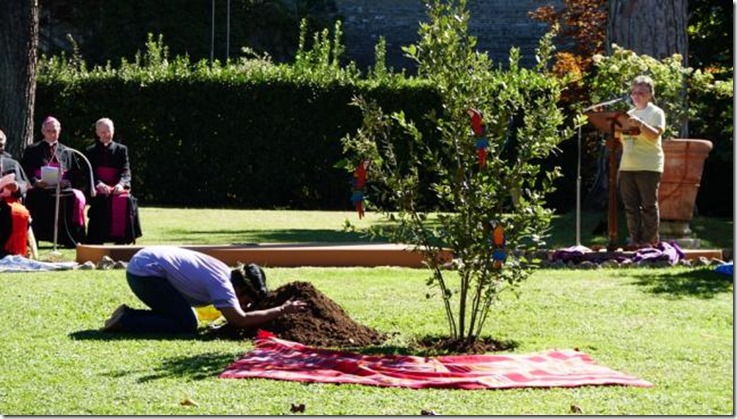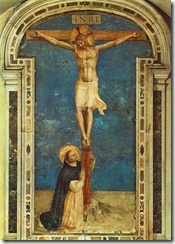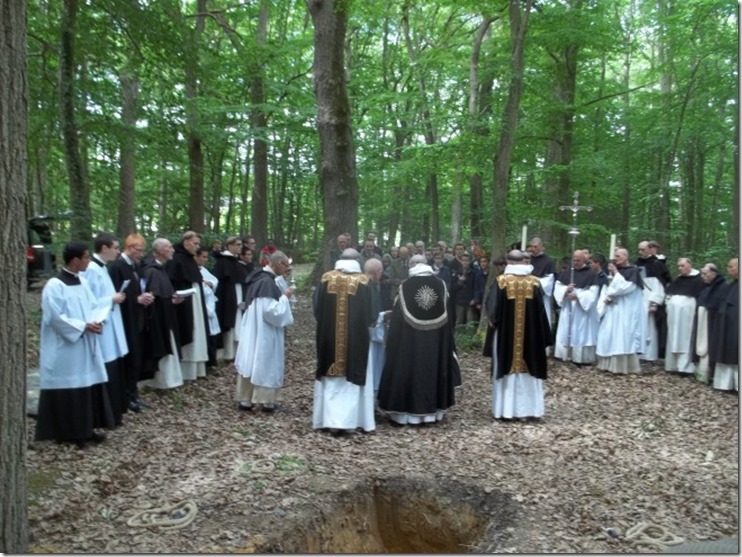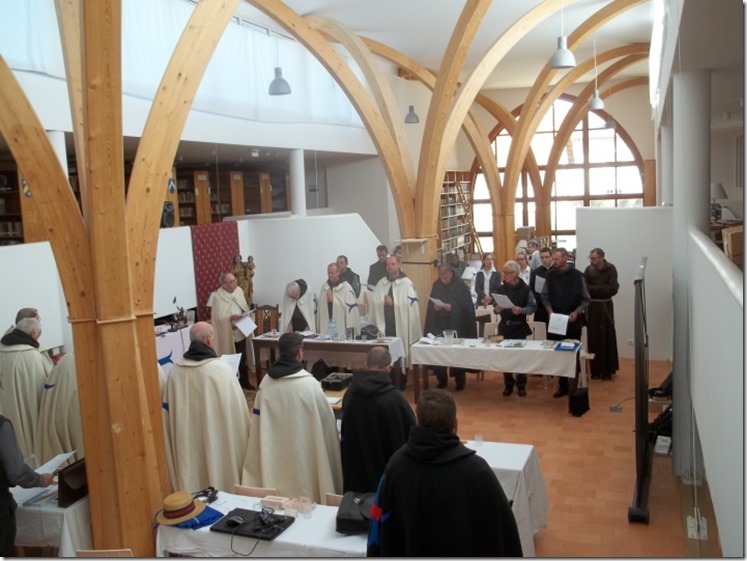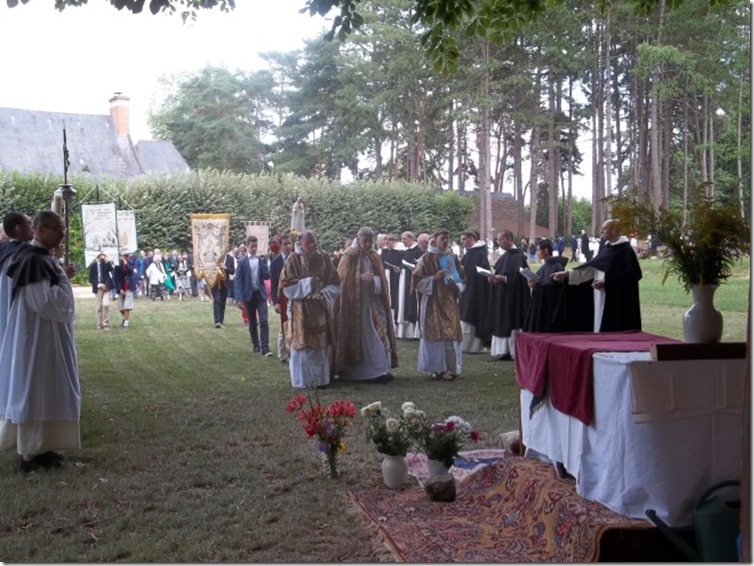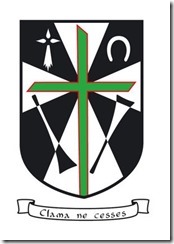A Model Catholic Wife and Mother:
Anna-Maria Taïgi (1769-1837)
(continued)
By Dom Bernard Maréchaux, O.S.B.
Published in Le Sel de la terre 62, Autumn 2007
Patience for any trial
Testimony of Domenico Taigi, her husband
“Fairly frequently, I would return home in a bad mood. She had the talent of calming me. She knew well when to be silent, but she also knew even better how to speak and when she should do so.”
Another witness reported:
“Fairly often, Domenico would return home in a bad mood after a day of squabbles among his fellow servants; but he always found in Anna-Maria the consolations that he needed. She always studied him so as to better understand his tastes and to please them, and his sorrows so as to lighten them. As soon as he arrived at the door, she sensed if he was in distress and she would pleasantly say, “Is it true that you had many stresses today? Yes, it is so! Well, then, do sit down and rest freely because here everything is going well 1.”
She arranged that her little family would have various innocent pastimes. Most often it was to attend an event at a church in the city; other times it was to enjoy the country. On such occasions, Anna-Maria would relax her austerity a little so as to take part in the communal enjoyments. Once on a certain Friday, she allowed herself to take a bit of food between her meals. She was corrected from above for her indulgence.
But there were certain boundaries over which she should not transgress:
When her son found a bride, and her daughter became engaged, after all the relevant information was gathered and the parental consents granted, Anna-Maria did not want the engagement to be longer than one month. She insisted that the youths not be together except in her sight, and the religious ceremonies concluded with a simple family meal.
We like to show our blessed governing her family in the traditional Catholic principles that foster mutual love and nourish respect. Her home was a thus little paradise. Prayers were said together in a little oratory where she would spend part of her nights in prayer, or where sometimes Mass was celebrated.
To raise and care for a family with seven children was always a difficult task when supported only by resources earned by Domenico’s daily labor. In his service to the Chigi household that often kept him until late in the evenings, Domenico earned only the equivalent of 25 euros ($33) each month. Anna-Maria supplemented this very modest wage by her own personal labors undertaken during what would have been her times of rest.
There were complications. The mother and father of this saintly woman ended up under her oversight: she had to feed and care for them for several years, and the condition of her father required particularly burdensome and even unpleasant duties. Also, since the Chigi family left Rome during the French occupation, Domenico lost his income for a time. And a dreadful famine was declared in Rome. Squeezed on all sides, Anna-Maria did not lose heart. She learned how to make women’s corsets and shoes, which she would spend part of her nights doing. God came to her aid in ways that can be considered miraculous.
After her mother and father passed away in bona pace [good peace], Anna-Maria was able to breathe easier. But then we see that her daughter Sofia became a widow and came back home with six little children. The great heart of our blessed opened up to these innocent ones and she adopted them without hesitation. Sofia already knew the apostolic charity of her mother, but this admiration was to grow as she saw even more of Anna-Maria’s energy and confidence in God.
While poverty reigned in the household, so too did peace. The daughter-in-law of Anna-Maria, the wife of Camillo, who lived for a while in the Taigi home, had a particularly difficult character. The saintly woman endured these difficulties with an angelic patience.
We do not want to omit any of the character traits that show through in Anna-Maria’s actions, and so by uniting everything we can reconstruct a portrait that is worthy of the “Strong Woman of Solomon.” Here indeed was a great woman. And since Anna-Maria was from humbler conditions 2, this is the only difference that distinguishes the one woman from the other.
We will see that women of the highest rank and people in the Roman court all had relationships with the wife of the Chigi servant. Anna-Maria was able to obtain assistance for them in their times of distress. She made nothing of it. She distributed supernatural assistance all around her, and even miracles; she never accepted what was offered to her in exchange. It was not pride. It was simply the application of the Gospel maxim: what you have received freely, give freely. She pushed the enforcement of this even to scrupulosity.
Model of Mothers-in-law
Domenico relates:
“My wife always made peace reign, a heavenly peace in the family even though we were numerous, of different characters, and especially when Camillo my son came to live with us during the first years of his marriage. Our daughter-in-law had a very difficult personality. She wanted to command things, but the servant of God knew very well how to make everyone happy. Even if I were to speak of everything, it would not be sufficient.”
Fr. Bessieres comments:
“Model of spouses and mothers, here now is also the model for mothers-in-law! Can this masterpiece even be imagined? Anna-Maria imposed peace, under the rainbow of Noah, where to the right were situated spouses and in-laws, a daughter-in-law and two tribes of children, seven on one side and six on the other 3!”
The Contemplative and the Mysterious Sun
On the foundation of this humble life as wife and mother of a family, God was pleased to construct a spiritual palace of magnificent proportions. After her renouncement of the vanities of the world, there blossomed in Anna-Maria all the gifts and graces from above, her profound recollection, intimacy with God, ease of ecstasy, and her exercise of heroic virtues. And God crowned his heavenly generosity with a truly extraordinary favor: he took up His abode in a mysterious sun and so appeared in this way to the eyes of His servant who enjoyed the continuous presence of her Lord by this means for the duration of 47 years. Let us enter into some of the details of this phenomenon that we can say is unique in the lives of the saints.
It was in the early days of the conversion of the servant of God that this remarkable phenomenon manifested itself. She was in her oratory when the mysterious sun appeared before her eyes of flesh. It was the same size as the sun that shines on us every day. It was in flames, with its disk of a matte gold. Little by little, and following Anna-Maria’s progress in the spiritual life, it became increasingly resplendent — so much so that during the last period of her life it shone as seven suns. This sunburst did not overwhelm her view, even when she had a nearly lost eye that could not endure light.
The sun in itself contained representations that gave her mystical meanings. In its upper portion was a thick and tangled crown of thorns, and on each side a very long and harsh thorn was situated. These 2 thorns, appearing like 2 sticks, crossed into the lower part of the disk. Within the sun’s middle section, and a little to the right, a divinely beautiful woman was seated: from her forehead a double ray of light mounted up to heaven. Her feet rested toward the left on the edge of the sun. The images and smoke that rose out of the earth were propelled with force outside the disk. Sometimes symbolic figures passed before her without obscuring the disk.
According to plausible interpretations of theologians, the solar disk represented the Incarnate Word; the seated woman represented Eternal Wisdom; the thorns and crossed sticks represented the Sacrifice of the cross to which the Word-made-Flesh submitted.
The marvel was that the sun reflected for the eyes of Anna-Maria all the events that were happening in the entire world: plots of secret societies, conspiracies in the process of being carried out, wars, deaths of famous people, floods and cataclysms. Our Blessed Anna-Maria announced these before anyone could have had any natural knowledge. Weeks later, news of the events would arrive, and never was the clairvoyance of our seer incorrect. But still more remarkable was this: she read consciences with an absolute confidence; she knew the eternal fate of souls after their deaths and she followed them whether they were in heaven, purgatory or hell. With views of the present she joined prophetic announcements of the future; other times it was events from the past that took on life before her eyes and thus did she inform Pius VII of a particular incident from his childhood. In a word, the book of divine knowledge opened for her in this mysterious sun: as saints see everything in God, she saw everything in this mirror.
In the presence of such a constant and ongoing phenomenon, our dear blessed held herself as annihilated: Who could thus endure such a spectacle? Of herself, the servant of God never dared to raise her eyes to the disk-sun. It was necessary that she be urged to do so by a strong interior inspiration or her charity for the needs of another that constrained her. The Savior evidently proposed that she make of herself a victim. When she saw a deluge of evils ready to converge upon the Church, she offered herself to prevent this. When she saw a soul on the edge of its eternal damnation, she immolated herself to save it.
She had wanted to keep silence regarding all the heavenly favors of which she was the recipient, but as an obedient daughter she had to open herself to her confessor, who himself consulted with high ecclesiastic dignitaries. These men recognized the veracity of the information given by Anna-Maria concerning events that were outside the realm of normal knowledge. They determined that her phenomena was useful for the Church and for souls. They permitted that the humble woman was consulted, and they themselves consulted her. Numerous times she had to give heavenly warnings and to reveal divine secrets. It became very clear that she had become a victim and her life henceforth was a martyrdom.
And while the sorrow caused by the view of her mystical sun was severe enough to make her a victim, this was not all of her martyrdom. The devil, furious that his plans were revealed by a poor woman, rushed upon her with a veritable rage. He struck her cruelly, as he had done previously with St. Frances of Rome. She submitted to the most woeful maladies and to the most complicated infirmities. She had an eye that suffered as if it had been pierced by a thorn; she felt the stench of the sins of the world; she tasted in her mouth an intolerable bitterness. At any given moment, she was assailed with temptations against the faith; deprived of all sweetness and consolation, surrounded by darkness, and thus consigned to a hell-like imprisonment. She endured these spiritual trials, worse than death, with an invincible patience.
The devil tried to induce her to thoughts of despair; Anna-Maria wondered tearfully whether she would be saved. But here Our Lord intervened: He gave the most formal of assurances to his beloved victim.
The evil spirit raised up evil people to overwhelm her with calumnies, which came back upon the evildoers themselves. Our Lord declared that He would send upon them the injuries that were hurled against His servant and that He would punish them severely and even mercilessly in this world and in the next. And, in fact, these people became insane or were reduced to poverty and died sadly. It was only due to the strength of Anna-Maria’s self-immolation that several of these were rescued from their eternal damnation.
Those on the contrary who showed her sympathy obtained graces of conversion or advancement in the ways of God.
Apparitions, Gift of Miracles
The portrait of our Blessed’s sufferings that we have outlined has been frightening. One wonders how a human being could have endured an entire lifetime thus tortured in all her members, both body and soul. But among those who are familiar with the lives of the saints, one is certainly aware that ineffable consolations alternate with heartbreaking sufferings, and that if at times a saint has been lowered to the depths of hell’s entrance, they are also sometimes lifted up to the threshold of heaven. And even more than this, something humanly impossible happens wherein there develops a coexistence within the saints between their ravishments of divine intimacy and their violent sufferings. And this was true of Anna-Maria.
Her spirit did not cleave to the earth, but was always ready to fly away. In thousands of small incidents, she perceived the indications of the goodness of God that are poured out upon all His creatures but which carnal people do not recognize. The song of a bird, the perfume of a flower, the breath of a light breeze could be sufficient to send her into an ecstasy. And even more so would a circumstance of the life of Jesus Christ or an interior touch of the Holy Spirit. And these ecstasies would occur everywhere: in her home, or during meals, in the streets of the city, or in churches. She would say to Jesus, “Leave me be, as I am a mother of a family!”
From time to time our Blessed heard heavenly voices. The Madonna spoke to her from the apse of the Ara-Coeli Church (Santa Maria in Ara-Coeli, Rome). The Child Jesus appeared to her (in the church with this title) in great beauty, in a Host, and said to her: “I am the flower of the fields, I am the lily of the valley. And I am totally yours.” At Sant’Andrea della Valle Church, the Savior revealed Himself to her amidst a resplendent light and with a majestic mantle. Her Holy Communions were typically accompanied by raptures of ecstasy; and when she was in a church she was able to “feel” where the Eucharist was located.
One apparition of our Savior that is notable among all others occurred when she lived on the “via del Sdrucciolo” near the Chigi palace. Anna-Maria was gravely ill and during the night people feared for her life. Toward dawn, Jesus appeared such as is typically attributed to Him as the Nazarene: with a violet garb and with a magnificent blue mantle with folds and layers. He was as imposing as a king, but tender as a spouse. He took Anna-Maria’s right hand in His and held it tightly for a long time He told her that He was taking her as His spouse and that he was bestowing upon her hands the gift to cure sick people. When He disappeared – He Whose grace and beauty ravish hearts – Anna-Maria experienced a great sadness and let out a loud cry. People ran near to her bed, but she reassured everyone and announced that she was cured. She got up, washed and went about her ordinary business.
One time she saw the globe of the earth as if surrounded by flames that threatened to consume it. On one side, Jesus on the Cross poured out streams of blood; the Virgin was at His feet, weeping and casting aside her mantle, calling out to Heaven on behalf of sinners and offering the Blood of her divine Son to appease the wrath of God. Anna-Maria melted into tears and supplications, and God pardoned.
Nevertheless, miracles burst forth from contact with the hand of this humble woman. We will relate but a few of these marvels only, and one among many worked upon her granddaughter Pepina, which were in reality numberless. Anna-Maria never wanted to receive anything from the sick that she cured.
The conversions brought about by her prayer and by her intervention were actually even still more surprising. Some freemasons or carbonari came back to God and made honorable amends because the Servant of God took an interest in them; likewise, devoted priests consoled the Church by their return. In general, her prayers for a soul, supported by her penances, obtained their effect; however in the cases of souls who had abused the mercy of God, she could not prevent the divine just judgments from falling upon such sinners.
Deeply Involved in the Life of the Church
From her conversion in 1790 until her death in 1837, by means of her miraculous sun, Anna-Maria was deeply involved with the life of the Church. She entered into relationships with important people in the Roman Court, and through them she was known by the pontiffs who reigned on the chair of Peter in her lifetime. For example, Cardinal Pedicini would consult with her. This prince of the Church introduced her process of beatification.
Our humble blessed predicted point by point the details of the return of Pius VII (prisoner in Savone) to Rome during a time when nothing could have foretold such a happy event. She recalled to him a detail of his childhood that only God could have revealed to her, and she predicted his noble death.
She prayed for the successor of Pope Pius VII, Leo XII. She announced the former pope’s death and saw the state of his soul as a beautiful diamond when it departed this world, already in light but still imperfectly purified. She foretold the short reign of Pius VIII. When he was ill, she declared that he would recover but then fall ill again and then quickly die. She then announced the elevation to the papacy of Maur Cardinal Cappellari, who took the name of Gregory XVI. She had the greatest veneration for him and sent several communications regarding the dangers that were threatening the Church.
During this time period, there was a particular group of holy people in Rome: the blessed (and now Saint) Gaspar de Bufalo; Mgr. Strambi, Passionist bishop of Macerata; Msgr Menocchio, Sacristan of His Holiness; Dom (Saint) Vincenzo Palloti, and Felix de Montefiascone, Capuchin. Anna-Maria was involved with all of these and when they came to visit, her sun shone with an extraordinary brilliance. She saw brother Felix rise straight up to Heaven; she saw Mgr. Strambi do likewise after a period in purgatory.
It was given to her to unmask several falsely pious people who sought to acquire a reputation for holiness. She was not surprised to see souls being lost that people thought were on the road to salvations — priests, ecclesiastic dignitaries, religious sisters and brothers – as they had forgotten that it is not the religious habit that saves, but humility, charity, and fidelity to God.
On one occasion, two priests were discussing in her presence their thoughts on the number of the elect. One asserted that the number was great, while the other maintained that according to the words of Our Lord Himself (Mt.7:13) it was a small number. Both men had recourse to our blessed and asked her to consult her sun. God then gave her to know the fate of the souls who had died in the last 24 hours: very few, not even ten, went straight to heaven; a certain number went to purgatory; and the rest all fell into hell like flakes of snow. Assuredly this is terrible and is due to the perversion of ideas and the general corruption of morals everywhere, in spite of the advances that a merciful God extends.
Nevertheless, there were some consoling aspects in Anna-Maria’s revelations. She saw, for example, how God takes a fatherly care of the souls that He wants to save, helping provide occasions for them to do good works, or drawing them little by little in the way of penance and salvation. Alms given to the poor or pardon granted to an enemy can be decisive in determining the balance of the scales of divine judgments.
In sum, Anna-Maria’s revelations drawn from the mysterious sun could penetrate a soul with a profound fear of God – the fear that is so necessary to Catholic life. Likewise, the visions could excite souls to a true vigilance over themselves, and to a great humility because people would see that deficiencies in uprightness and purity of intention were severely punished in purgatory. Lastly, the revelations convey confidence when we see all the astounding favors with which the humble and loving Anna-Maria was blessed by God, the efficacy that He gave to her prayers and immolations, and the great number of souls whose salvation was due to her. Oh, God, please give us similar saints!
Death and Beatification of Anna-Maria
She died of a chest inflammation on June 9, 1837, after announcing her death several days previously and having endured with the greatest patience the pains of a malady that lasted seven months. An order from Heaven prohibited meat, and she became bedridden on October 24, 1836. She was not, however, deprived of Holy Communion, as Mass was celebrated each day in her domestic chapel. Pope Gregory XVI permitted her to receive Communion without any Eucharistic fast. The Monday before her death, after receiving both Holy Communion and a Heavenly apparition, she announced clearly that she would die on the Friday of that week.
It is impossible to convey the expression of happiness that shone on her face. She asked for her husband, thanked him for his solicitude, and had with him a final and private conversation. She called for her children, exhorted them to fidelity to God, devotion to the Blessed Virgin, and daily recitation of the Rosary together. Lastly, after blessing her children and bidding her final goodbye to her husband, she recollected herself so that she could think solely of Heaven.
Her sickness worsened in the following days and she received Viaticum and Extreme Unction. A Trinitarian Father gave her the indulgences of his Order, as she was a tertiary. And although she suffered horribly, God permitted that she was abandoned by everyone during the three last hours of her agony. It was not until the very last moment that two priests came running to recite the prayers for the dying. She died during an invocation to the Precious Blood of Jesus, at 12:30 am.
The death of this holy woman made for a sensation in Rome. No one was indifferent, from the average man all the way to the sovereign pontiff. On instructions from Gregory XVI, Cardinal Odesalchi had Anna-Maria buried in a special section of the Agro Verano, the great cemetery in Rome near Saint Lawrence Outside the Walls. The coffin was sealed and the tomb was marked with an inscription in marble.
Miracles exploded through her intercession. Introduction of her cause took place under Pius IX, January 8, 1863. In 1865 the body of the servant of God was found to be incorrupt and transported to Blessed Mary of Peace. It was then buried in the church of the Trinitarians at Saint Chrysogonus. Pius X proclaimed her heroic virtues on May 4, 1906 and the two miracles required for beatification were approved by Benedict XV on January 8, 1919. The beatification took place at Saint Peter’s on May 20, 1920, Feast of the Holy Trinity.
Our Lord had said to Anna-Maria: “I have chosen to place you among the ranks of the martyrs.” Likewise, He said: “I have destined that you be known throughout the entire world as an example of penance and as the model of married women.” The humble woman was confused to have to repeat such words to her confessor, to whom she was obliged to tell everything. But today, these words have been proven true.
Annex:
Anna Maria Taigi (1769-1837) and Napoléon (1769-1821)
Napoleon and Anna Maria Taigi never met. Yet Providence has established mysterious bonds between them – links of opposition, but also intercession and compensation – throughout their lives:
*Both were born the same year (1769), both of Tuscan parents.
*Since 1790 (she and Napoleon are 21 years old), Anna Maria Taigi is favored with the mysterious sun, in which she can follow the progress of the French Revolution, but also the rise of the young Bonaparte, who is appointed general at 24 and commander-in-chief of the Army of Italy at 26 years.
* 1798: On the orders of Napoleon, and thanks to his brother Joseph, the Roman Republic is proclaimed. Pope Pius VI was kidnapped by Massena and imprisoned in Vienna, then in Valencia – where he died in 1799. From Rome, Anna Maria follows and describes his agony. But she also announces the coup d’etat on Brumaire 18: Bonaparte will reopen France to the priests. The concordat of 1801 will allow the renewal of French Catholicism.
* Austerlitz (1805), Iena (1806), Eylau (1807): the mysterious sun shows in real time – or even in advance – to the eyes of Anna Maria the fresco of the events of the world. She sees the successive victories of the Emperor, and, at the same time, the Masonic convents, the mass graves of Europe, where thousands of soldiers die without priests, Spain on fire, the Church administered by the Emperor like a regiment, daily crushed, open to schism, bishops prone to resistance, imprisoned, the Pope threatened… And a voice repeats to Anna Maria: You must fulfill in your flesh what is lacking in my passion, for my Church and my vicar.
* February 2, 1808: the troops of Napoleon occupy Rome and point their artillery on the Quirinal where Pius VII lives. The Papal States are united to the Empire, the pope is arrested and incarcerated. Anna Maria long since announced these events and their unfolding. God explained to her that he left the ungodly free to act, but that he would stop them at the moment when they thought they were about to triumph, provided that she, on her part, satisfied his justice. As soon as she sees in her sun the threats that Napoleon makes to the Church, she reminds God of her promise and offers herself to suffer “so that the arms of the impious are broken and their power dispersed.”
* 1809: While Napoleon wins the Battle of Wagram, Pius VII, thrown into a locked carriage, is dragged from Florence to Turin, then from Turin to France, from where it is brought back to Savona, and finally to Fontainebleau, where he seems to be dying. For five years Anna Taigi followed his tribulations hour by hour and informed the cardinals about them. But she also predicts his deliverance. Our Lord explains to her: “For what purpose have I raised up Napoleon? – He is the minister of my anger to punish the iniquity of the wicked and to humble the proud. An impious one destroys other ungodly people.” Napoleon himself declared, on his part: “I feel myself pushed towards a goal that I do not know. When I have reached it, as soon as I am no longer useful, then an atom will be enough to knock me down.” Anna Taigi announces from the beginning that the pope’s captivity will last five years. She describes in advance to Cardinal Pedicini and Bishop Natali the future campaign of Russia, the abdication of the emperor, and the return of Pius VII to Rome.
* 1814: Anna Taigi predicts a year in advance that Pius VII will officiate in St. Peter’s Basilica on the day of Pentecost 1814. This is fulfilled literally. On April 4, Napoleon signed his abdication at Fontainebleau in the same palace where he imprisoned Pius VII. May 24, 1814, is the triumphal entry of the Pope into the Eternal City.
* May 5, 1821: Napoleon dies in Sainte-Hélène. The news will not arrive in Rome until two and a half months later, but on the very day of her death, Anna Taigi describes it to Msgr. Natali. She sees the exile’s bed, arrangements, tomb, ceremonies, funeral, and destiny in eternity.
* February 1st, 1836: Letizia Bonaparte, mother of Napoleon, dies in Rome, where she took refuge. The funeral takes place in the church Santa Maria in Via Lata, right in front of the house of Anna Taigi. She will have her mass of burial in the same church, a year later (June 11, 1837). During her last four years, Anna Maria met Napoleon’s uncle, Cardinal Fesch, several times. It is not known whether he echoed their conversations in passing this judgment on the fallen emperor: “God did not break him; he humbled him, and this is the way of salvation.”
Translated by Mrs M.F.
1 — – Cited by Albert Bessieres, SJ, Blessed Anna-Maria Taigi, Mother of a Family. Paris, DCB, 1936, p. 79, 84-86.
2 — In fact, Anna-Maria held a certain “rank.” Her husband was a servant, but in a princely home. He wanted his wife herself to have a servant girl that she would treat as a child of the house. This brought embarrassment for Anna-Maria.
3 — Albert Bessieres, SJ, Blessed Anna-Maria Taigi, Mother of a Family, p. 85.

